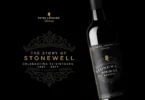The last Monday in August is generally the first of two days tasting in the old pumprooms in Wiesbaden. They are dedicated to the ‘Grosses Gewächs’ or dry, ‘grand cru’ wines produced by the VDP organisation in the previous vintage. The VDP (Verband Deutscher Prädikatsweingüter) has around 250 members, and almost all the top estates are members. It is therefore a marvellous opportunity to bring yourself up to date on which is happening in Germany, who is on the way up and who is on the way down and just what was the quality of the last harvest.
I flew out on Sunday morning because Caro Maurer MW had very kindly got me involved in tasting in Nierstein on the Rheinterrassen organised by Felix Peters at St. Antony. Together with the famous neighbouring estate of Heyl zu Herrnsheim, St. Antony is owned by the Hanover clothing magnate Detlev Meyer. Meyer had recently acquired some new land up on the renowned Roter Hang (the Red Cliff) which looks east over the Rhine from the estate of Franz Karl Schmitt and with it he had mopped up about 300 bottles of very old wine. Some of it going back well over a century. According to Peters, Schmitt’s was one of the best wineries in Germany before the war. It was that we were going to taste that Sunday.
‘Pour faire la bouche’ were given a taste of the 2012 St. Antony Riesling – a particularly dense and attractive wine, and a 1911 wine from the Hermannshof, owned by the Schmitts. Although the latter was 102 years old, it was still lively, even if it had an unmistakable smell of cep mushrooms.
Wines of this age are always rare, but particularly so in Germany, where, if they were not drunk up during the war, they were either swilled by the armies of occupation or bartered for food in the lean years that followed; but that 1911 was not the oldest, and it was far from being the best.
We then kicked off with an 1893 Nierstein Fläschenhahl Feinste Auslese from Franz Karl Schmitt: an excellent steep site with shallow topsoil. There was also a bit of that ‘cep’ smell, but it was recognisably Riesling with a tingling acidity. 1893 was the first great vintage after the Phylloxera Blight. The grapes were harvested early after a hot summer. The wine was surprisingly powerful.






